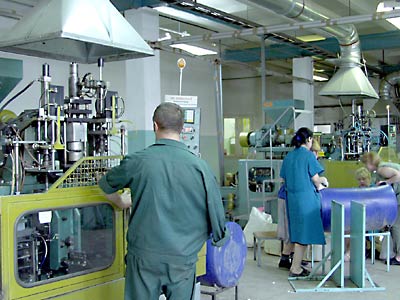You will need
- -Knowledge of cost of production figures on various counts.
Instruction
1
Method 1. The use of calculation articles.
Costing - calculation of the unit cost of finished products on the basis of various items of expenditure. There are several such articles:
1) Materials;
2) Wages of production workers;
3) Purchased from the products, prepared foods and a variety of production services;
4) Mandatory deductions and deductions for social. needs;
5) Additional wages;
6) Maintenance of the manufacturing equipment;
7) the Cost of development of the newly opened industries, the wages of managers, engineers and maintenance staff, as well as maintenance of premises (6 previous points + 7th form shop cost of finished products);
8) Costs for promotion, for awarding work, travel, etc (7 of the preceding paragraphs + 8 obsesivos determine the cost of finished products);
9) non-production costs: transport, storage and bringing the goods to the consumer (All 9 points will be the total cost of production);
10) the cost of additional and auxiliary materials.
Costing - calculation of the unit cost of finished products on the basis of various items of expenditure. There are several such articles:
1) Materials;
2) Wages of production workers;
3) Purchased from the products, prepared foods and a variety of production services;
4) Mandatory deductions and deductions for social. needs;
5) Additional wages;
6) Maintenance of the manufacturing equipment;
7) the Cost of development of the newly opened industries, the wages of managers, engineers and maintenance staff, as well as maintenance of premises (6 previous points + 7th form shop cost of finished products);
8) Costs for promotion, for awarding work, travel, etc (7 of the preceding paragraphs + 8 obsesivos determine the cost of finished products);
9) non-production costs: transport, storage and bringing the goods to the consumer (All 9 points will be the total cost of production);
10) the cost of additional and auxiliary materials.
2
Method 2. The calculation of production costs by economic elements.
This method allows to obtain an overall estimate of the cost of production, and hence the company can maintain effective planning of their business activities. For all types of businesses, a unified composition elements:
1) Basic raw materials that are acquired from the semi-finished products and production sets;
2) Materials auxiliary character;
3) Fuel, fuel;
4) Electricity;
5) the Salary of all production personnel;
6) Social contributions;
7) depreciation deductions;
8) Cash costs of a different nature.
This method allows to obtain an overall estimate of the cost of production, and hence the company can maintain effective planning of their business activities. For all types of businesses, a unified composition elements:
1) Basic raw materials that are acquired from the semi-finished products and production sets;
2) Materials auxiliary character;
3) Fuel, fuel;
4) Electricity;
5) the Salary of all production personnel;
6) Social contributions;
7) depreciation deductions;
8) Cash costs of a different nature.
Note
We must not forget that the calculation of production costs by economic elements and includes the deduction of the cost of returnable waste. By this term is meant the secondary raw materials that will be used in subsequent cycles of production.
